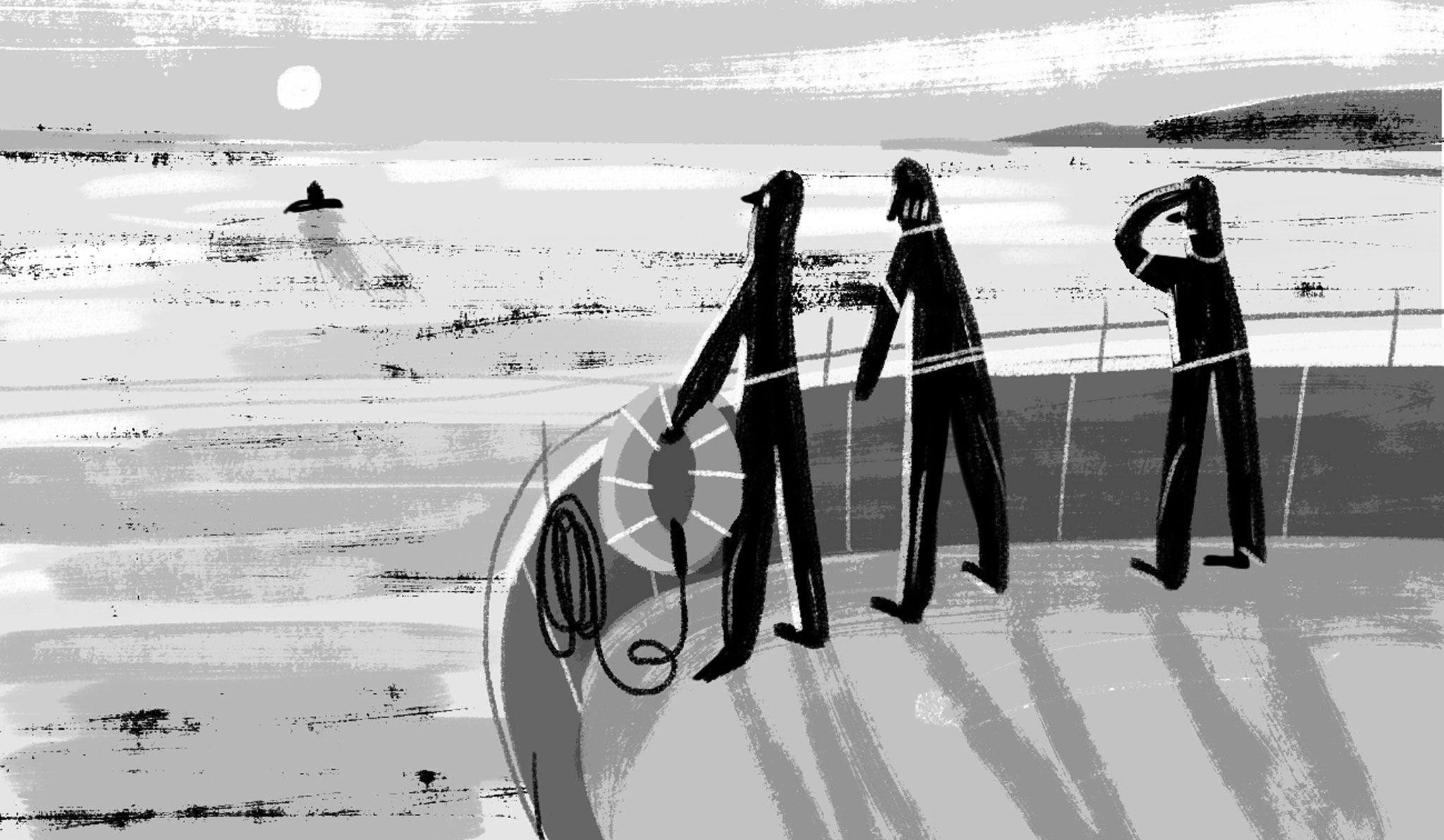What happens when someone falls off a US Navy aircraft carrier?

If someone sees the person fall overboard, they report "man overboard starboard/port side" to the navigation bridge. It is important to provide the side of the ship, as the ship will be turned in that direction. A life ring is immediately thrown over the same side, even if the person in the water is not visible. This marks the approximate point the person went over for navigation purposes.
The officer having the conn [control of the engines] orders an alert to be sounded throughout the ship, and a "Williamson turn" to the direction the person fell from. A Williamson turn is an immediate, hard turn that first puts the ship's heading about 60 degrees from its original course before turning hard back in the opposite direction until the ship's heading is 20 degrees off the opposite direction of its original heading. The rudder is then centred, and the ship returns to the point in the water where the person went over.
The hard turn moves the propellers away from the person. If they come into contact with them, survival is unlikely.
The "man overboard" alarm prompts some sailors to assemble in a pre-designated area to prepare to lower one or more boats to form a rescue party. Those sailors not directly involved in the rescue effort assemble at their "muster stations" to be counted. Muster counts are reported to the bridge, which should give some idea of who is missing from the ship's company and is presumably in the water.
The ship then begins a search and rescue effort to locate the person overboard and recover them.
Tim Dees, retired police officer
I've been aboard several times when people have gone overboard. One time I saw a Marine being blown over the fantail by a jet blast. A fellow Marine jumped in after her and they both required rescuing (having broken a few bones on impact with the water). They had flotation gear, and the rescue helicopter that is always flying nearby during flight ops picked them up, aided by a rescue swimmer.
Another incident was a deck ejection from an S-3 at night. While the NFO (Naval Flight Officer) ended up hanging in his chute from some of the antennae (inspiring his new callsign, "Swinger"), the pilot ended up behind the ship. Even though the helicopter was less than a mile away, it took 20 minutes to find and recover him in the darkness.
We also had a mail clerk with troubles at home who decided that he didn't want to go back. He stepped off the deck during our last port call. While his shipmates watched, he slowly swam away from the ship until he slipped beneath the calm Mediterranean waters. We never recovered his body.
Tim Hibbetts, A-6E and F/A-18C Pilot
These are edited answers. For the full versions, go to quora.com, the popular online Q&A service
Subscribe to Independent Premium to bookmark this article
Want to bookmark your favourite articles and stories to read or reference later? Start your Independent Premium subscription today.

Join our commenting forum
Join thought-provoking conversations, follow other Independent readers and see their replies